That Leopard Shoe Hat
- Jo Weldon
- Mar 4, 2019
- 4 min read
Updated: Mar 4, 2019

This post was inspired by reading about the death of Katherine Helmond, an actress whose talent I admired greatly. She was a wonderful actress and a charming person, and I wish her loved ones condolences for their recent loss. I picture her in my book as an example of the Bad Mother character who appears in so many films and TV show in the 20th century. That's her on with Jonathan Pryce in Terry Gilliam's dystopic 1985 movie Brazil. I saw it when it was released and was incredibly envious of her cheetah suit with matching shoe hat. She wore it with such panache that I became obsessed with it, and encountered the following history.
Costume design for the film is credited to James Acheson, who won the 1989 Academy Award for his costume design for Dangerous Liaisons. This post is actually about the designer who inspired that hat, which its own complicated story. Though I encountered much of this information during my research, it didn't make it into the book. I hope you enjoy this extra leopard-print tidbit!
The leopard shoe hat in Brazil is an amalgam of two hats designed by Elsa Schiaparelli, a fashion designer who was famous for her ingenious avant-garde clothing designs in the 1930s.
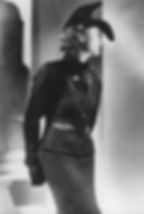
This shoe hat was designed by Schiaparelli in 1937 in collaboration with Salvador Dali. Her avant-garde style was much loved by surrealists, many of whom were connected to both art and fashion. She and Dali collaborated on many items, and you can see merchandise related to their projects at the Dali Museum in Florida. These include a pair of leopard print socks trimmed with Schiaparelli's signature shocking pink.
Schiaparelli loved leopard fur and leopard print, employing it repeatedly. She was well-known for her cheetah hat.
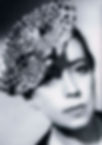
While most of us today wouldn't dream of putting a piece of an endangered animal on our heads, at the time big cats such as cheetahs and leopards were in vogue -- in visual art, in clothing, and even as pets. Josephine Baker was well known for her pet cheetah Chiquita, who traveled about with her when she was on tour.
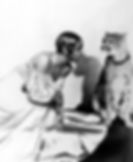
There was precedent in modern fashion, of course. Big cats had been popular in fashion and as pets in the 1920s, when women may have kept them not only for their beauty but to display their daring, power, and wealth. Salvatore Ferragamo had employed big cat prints in his thigh-high boots designed for stylish and progressive women like actress Lola Todd, seen here with a pet leopard in 1925, which boots Azzedine Alaia used as inspiration in 2017.

Salvadore Dali had an ocelot, and was known for wearing leopard print then and in his later days.
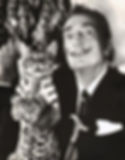
Editor and writer Nancy Cunard didn't have a big cat, but she was known for pairing leopard print with African ivory. Her legacy is her editing and publishing work by black writers, while working against their oppression and the erasure of their literature from the canon.
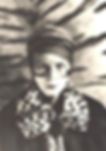
All of this is to say that leopard and cheetah print, and the big cat motif in general, was a favorite of artists and writers, while being associated with exoticism and a daring, counter-cultural sensibility.
This is why Katherine Helmond's hat in Brazil is so interesting, as is this replica hat on Julie Dreyfus in Inglorious Basterds.

Both Helmond's and Dreyfus' characters in their respective films are collaborators with fascists and oppressors.
There has been much written about the dubious relationships many fashion designers had with the Nazis during the WWII occupation of Paris. Dior's friendliness with them, as he was forced to work to produce gowns to be worn by Nazi wives, has raised more than one eyebrow. He is absolved by some because of his apparent reluctance, and his help to his sister Catherine, who was a resister. Coco Chanel, on the other hand, is considered by many to be a direct collaborator.
However, Schiaparelli wasn't even there. She fled Paris for New York, where she collaborated on The First Papers of Surrealism with Marcel Duchamp, and designed jumpsuits. Her career never fully recovered after the war and her atelier closed in 1954. So why is it that her designs come up in these films on characters who are directly collaborating?
I believe it's because her fashions were so playful, so outrageous, that they have an iconic quality that suits outrageous characters. Surrealism seems unaccountable to reason to casual observers, and possibly frivolous. The collusion of designers during the Paris occupation is a reminder that fashion is always a form of communication, and Schiaparelli WAS fashion, particularly in New York where the Avant Garde is always a given. Her clothes were not just chic, but theatrical. The association of deceit with performance may have entered the minds of film designers.
The reality is that fashion is always political. Elsa Schiaparelli was a great artist, a person who gave the deep primal human psyche credit for the outward symbols of sophistication. While fashion is often read only on the bodies of the wearers, sometimes we require a reading of the creator and her times to understand a body of work, clearly as a statement of her passion to connect the merely human to the greater world.
Photo credits pending
